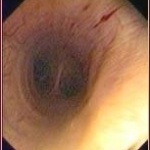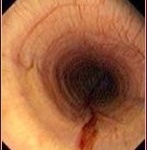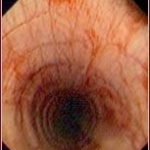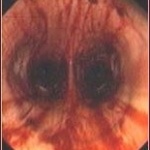Other Health Issues
Bleeding of the lungs or EIPH (Exercise-Induced Pulmonary Haemorrhage)
The cause
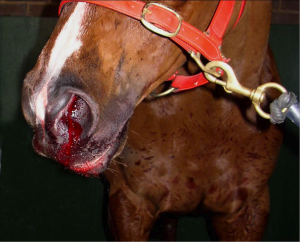
Exercise-Induced Pulmonary Haemorrhage is an exercise-induced condition with high prevalence in racing thoroughbreds. Horses with EIPH bleed into the lungs and airways, usually as a result of burst capillaries. The tiny blood vessels are ruptured by the sheer pressure of blood pumping around the body during strenuous exercise.
In Australia, the first time a horse suffers from EIPH in a race, they are banned from racing for three months, the second time they are banned for life.
How prevalent is it?
A study by the University of Melbourne states "Exercise-induced pulmonary haemorrhage occurs in most thoroughbred race horses". (1)
Similarly, it was published "EXERCISE-INDUCED PULMONARY HEMORRHAGE (EIPH) is a condition afflicting nearly all racehorses during high intensity running . The severity of EIPH ranges from negligible blood in the lower airways detectable only via bronchoalveolar lavage (BAL) to frank epistaxis. Although minimal EIPH has been reported in humans after intense cycling, the severity of EIPH in the Thoroughbred horse is a unique phenomenon." (Kindig et al. 2001, p. 1396) (2)
Less than 1 per cent of horses show outward signs of bleeding, with blood at the nose (epistaxis). (3) The rest are more difficult to diagnose because they bleed into their lungs without it being obvious.
A study in the Equine Veterinary Journal found hemorrhaging in the lungs in 95 per cent of horses checked during two post-race examinations. (4)
An article in the same journal states that haemorrhaging in the lungs is a condition affecting virtually all horses during intense exercise worldwide, that there is no treatment that is considered a solution, and the currently allowed treatments have not proven to be effective in preventing EIPH. (5)
Grades of EIPH
In the 2005 study by researchers at the University of Melbourne, results indicated excellent concordance among observers of horses impacted by various levels of EIPH after racing using the below grading system. (1)
Photos courtesy of Dr. Ken Hinchcliff, DVM
The consequences
EIPH continues to be a serious problem in the racing industry and one of the major factors affecting the athletic performance of racehorses and resulting in early retirement.
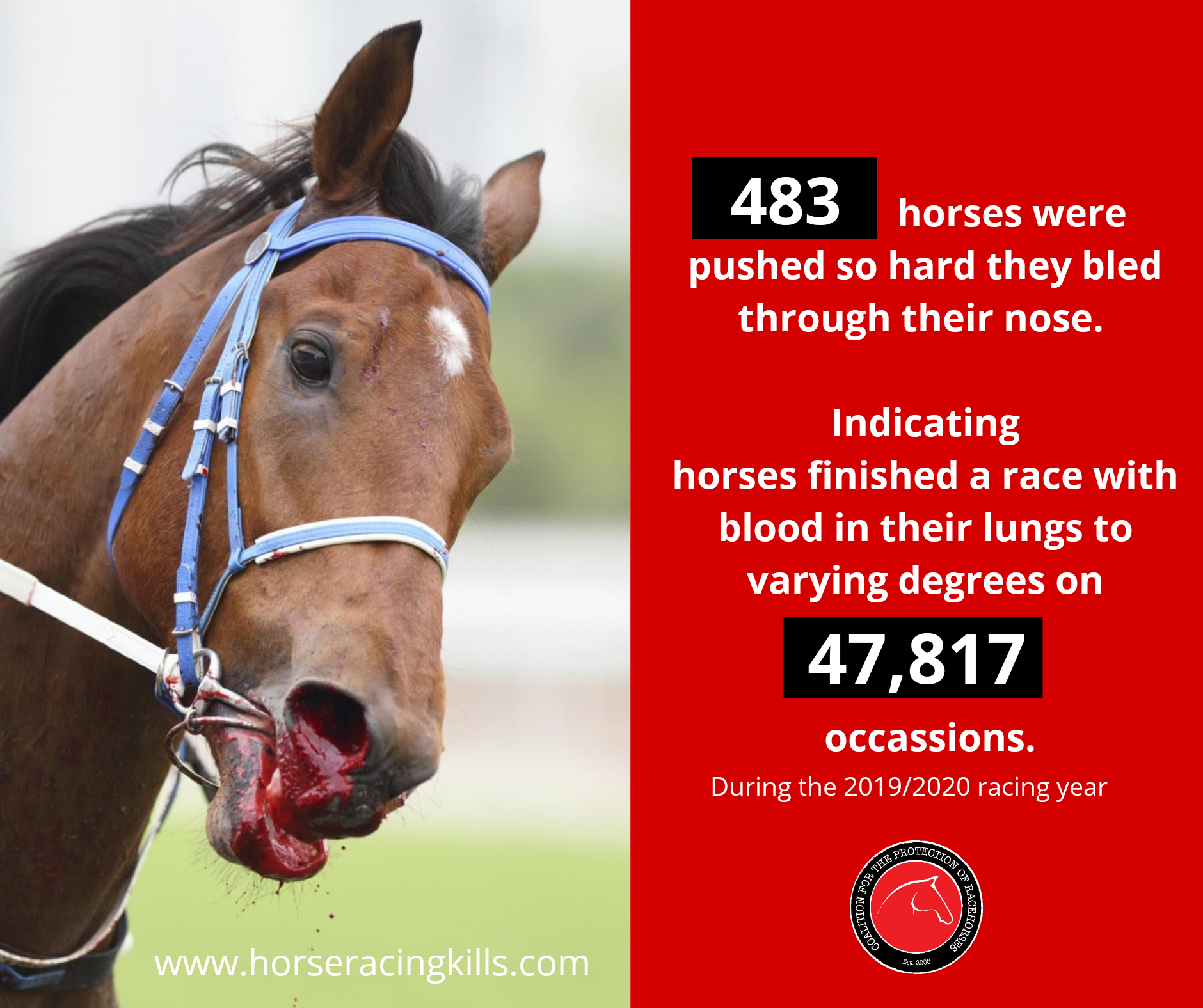
In Australia, the first time a horse suffers from EIPH in a race, it is banned from racing for three months, the second time it is banned for life.
CPR's research findings presented in our Deathwatch 2020 Report found 483 horses were reported to have bled through the nostrils during racing in the last racing year. Based on this figure, we estimate thoroughbred horses likely finished a race with blood in either their lungs, bronchi or windpipe, to varying degrees, that was not detected on approximately 47,817 occassions.
Prevention
The only way to prevent EIPH is to avoid over–exertion. Unfortunately, the nature of horse racing does not permit a horse to slow down when tired.
Stomach ulcers
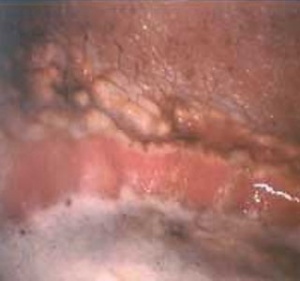
High concentrations of hydrochloric acid in the stomach are thought to be a major factor in the production of gastric ulcers. Horses secrete gastric acid continuously since they have evolved as forage feeders, grazing continuously over a 24-hour period in the natural state.
In some horse stables, there are periods of time when acid levels in the stomach of horses are high. This is because grain tends to be fed two to three times per day while the amount of hay between some of these meals is limited.
Exercising while gastric acid concentration is high is thought to contribute to ulcer formation.
Instead of having continuous access to fibrous food, which would promote the release of bicarbonate-rich saliva to buffer the production of stomach acid, racehorse are confined to a stable and fed to a timetable, so there is nothing to neutralise the acid that will damage the stomach lining.
High protein intermittent feeding is thought to maximize performance but compromises the health of the horse.
How prevalent are ulcers in racehorses?
A study of racehorses at Randwick in NSW found that 86 per cent had stomach ulcers. Many had deep, bleeding ulcers within eight weeks of starting race preparation.
The prevalence of gastric ulceration in thoroughbred racehorses is reported to be between 66 and 93 per cent, increasing to 80 to 100 per cent as training duration increases and racing commences. (6)
The consequences
In the wild, horses are vulnerable to predators if they show weakness, so will not show any sign of being in pain. However, we do know that stomach ulcers are extremely painful.
It is unconscionable with the knowledge we currently have that any horse is allowed to be placed in circumstances in which it is likely to suffer from this condition.
Prevention
Allowing horses continual access to hay, or in situations where it is feasible, allowing access to pasture, will aid in lowering acid levels in the stomach and reduce the incidence and severity of clinical signs.
It has been shown that continual access to hay will usually not affect the intake of grain and/or hard feed, in fact good hay eaters are invariably good grain eaters.
Continual access to hay may also lower the incidence of certain behavioral disorders in stabled horses. (7)
Inflammatory airway disease
The cause
Scientific studies have traced the source of inflammatory airway disease (IAD) in racehorses back to the unnatural conditions in which nearly all are kept, often starting long before their racing career begins.
Racehorses are stabled in loose boxes for up to 22 hours a day. This exposes them to agents such as dust, allergens and endotoxins whose sources include bedding, feed, loosebox materials, and sources outside the loosebox such as debris from swept laneways, stable corridors, human and mechanical activity.
Exercise physiologists, veterinary researchers, and observant horse trainers have long thought that the stresses of training and overexertion might make horses more prone to developing respiratory diseases.
“Respiratory disease is so important that it is second only to lameness as the most common cause of decreased performance, lost training days, and premature retirement among racehorses. Yet it is becoming apparent that racing and strenuous exercise, the actual substance of being a racehorse, is exactly what is putting these horses at risk.” Dorothy Ainsworth, D.V.M., Ph.D., a veterinary researcher, clinician, and professor of large animal medicine at Cornell University (8)
The consequences
Inflammatory respiratory disease continues to be a serious cause of wastage to the performance horse industries in Australia and overseas.
While the many scientific studies conducted on this issue highlight the financial cost of this disease to the racing industry, they do not address the pain and suffering to the racehorse.
Up to 33 per cent of young racehorses in training can have lower airway inflammation without demonstrating any clinical signs of respiratory disease, emphasising the serious welfare implications of this disorder.(9)
Prevention
There is a simple solution to this problem: horses should be kept in an environment where they are able to graze naturally and breathe fresh air. Unfortunately, due to cost, this rarely occurs.
References:
(1) Pulmonary Haemorrhage in Thoroughbred Racehorses RIRDC Publication No 05/026 February 2005
(2) "Efficacy of nasal strip and furosemide in mitigating EIPH in Thoroughbred horses" Casey A. Kindig, Paul McDonough, Gus Fenton, David C Poole, Howard H. Erickson, 2001
(3) "Exercise-induced Pulmonary
Hemorrhage. Is It Important and Can It Be Prevented?" Eleanor J. Crispe, Guy D. Lester 2019
(4) Birks EK, Shuler KM, Soma LR, Martin BB, Marconato L, Del Piero F., Teleis DC, Schar D., Hessinger AE, Uboh CE, “EIPH: postrace endoscopic evaluation of Standardbreds and Thoroughbreds,” Department of Clinical Studies, University of Pennsylvania, Equine Veterinary Journal Supplement, September 2002
(5) Birks EK, Durando MM, McBride S., “Exercise-induced pulmonary hemorrhage,” Sports Medicine and Imaging, Department of Clinical Studies, University of Pennsylvania School of Veterinary Medicine, Veterinary Clin North America Equine Pract, April 2003.
(6) The prevalence and distribution of gastric ulceration in
345 racehorses Aust Vet J Vol 81, No 4, April 2003 LM Begg and CB O’Sullivan.
(7)From Stomach ulcers in racing horses Dr Craig Suann. Racing NSW Senior Official Veterinarian
(8) Thoroughbred Times.com 28th Nov, 2006
(9) Inflammatory Airway Disease in Young Thoroughbred Racehorses.
RIRDC Publication No 03/089 Oct 2003

